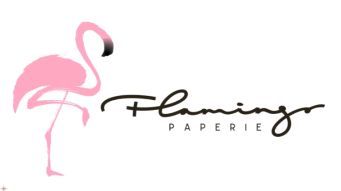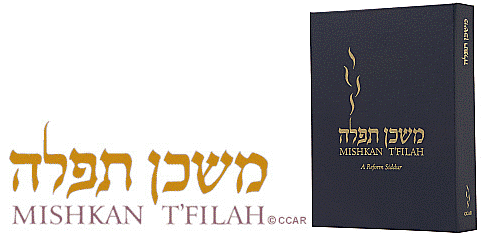Italy and Israel (April-May) by Aimee Sandler
After almost 18 months of planning it was time to head off on the holiday of a life time to Italy and Israel. I couldn't wait for our 5 weeks of discovering history, culture and food! I have been to Israel before, but had a yen to go back and explore more and get to know the country which has been at the core and foundation of our faith for over 2,500 years.
ITALY
Mum and I headed off to Italy first. We stayed in Rome for a few days and then joined our Trafalgar Tour called "The Best of Italy" with another 46 people for a further 13 days. Dad would join us for a further 2 days in Rome and then we would go to Israel together.
Starting in Rome in a cute little boutique hotel in the Trevi District, not far from Piazza Barberini, we explored on our own and discovered Trevi Fountain, Piazza del Popolo; The People's Square, The Quirinale- Government buildings, The Pantheon, Piazza Navona as well as the Spanish Steps. We had the most outstanding Gelato at the Gelateria -della Palma - over 150 flavours to choose from!
Joining the group tour, we stayed the first night in a gorgeous hotel called Hotel Victoria on Via Campania, a stone's throw from The Borghese Gardens. On the first night our brilliant tour director, Marisa, and a bus driver, Roberto, took us all on a tour around Rome.
In Rome we explored the Vatican Museums, Sistine Chapel and the Colosseum with a local specialist. Then it was off to Pompeii, Sorrento, the Isle of Capri, the Amalfi Coast and Positano for the next few days. We travelled further inland to the region of Umbria and stayed in Perugia but explored Assisi. On our way to Assisi we stopped in Monte Cassino. There was a Commonwealth Memorial and cemetery for soldiers who died in World War II. I found the grave of a lone Jewish soldier (identified only by the Star of David on the tomb stone) by the name of Sidney Shulton. He was a Private in the Queen's Royal Regiment of West Surrey, United Kingdom and died at the tender age of 22 on Thursday, December 2, 1943. We both left stones - letting him know that he was visited by some of his tribe!
Photos:
Left to right - Fallen Soldiers of Monte Cassino. Amalfi Coast. Grand Canal, Venice. Bridge of Sighs.
On to Venice and a cruise along the Grand Canal. The weather was incredible. We ate gelato, again, explored the exterior of Saint Mark's Basilica and the Palazzo Ducale - The Dodge's/ Duke's Palace - and took a short ride on a gondola where we saw the Bridge of Sighs
We journeyed through to the beautiful region of Lombardy to Milan and the Lake Districts to Baveno - a small town on the shores of Lake Maggiore (Lake Major) and about an hour's drive away from Lake Como.
After the Lakes we made our way onto Pisa. We discovered an old Jewish Cemetery on walking to the Leaning Tower and I later learnt, that a Jewish community has been present for there for about 1,150 years. It is the second place Jews settled in Italy, after Rome. On to the region of Tuscany, home to Florence-, the birth place of the Renaissance. Along with another local specialist we delved into Florence and attended the Galleria dell' Academia where we saw Michelangelo's David and other sculptures and paintings. We moved onto the Piazza del Duomo and then Piazza Santa Croce - one of Florence's largest squares. To our amazement we saw a huge Star of David (confirmed by our local specialist) as the symbol above the rose window of the Cathedral of Santa Croce. Bizarre, but awesome to see that we as Jews have indeed had an influence in Florentine art and architecture.
Alas it was time to go back to Rome and say farewell to some amazing people who had become our 'mia familia'.
Dad joined us at this point and we went back to our cute little hotel in Trevi.
Photos:
Left to right - Aimee and Barbara at Tower of Pisa. Florence.
Photos: Cathedral of Santa Croce (note Star of David). Caricatures of Murano Glass.
On researching our trip, I found that there was a tour of the Jewish Ghetto in Rome. We were all intrigued! It is in the Trastevere neighbourhood of Rome, along the Tiber River. We met our guide, Micaela Pavoncello, a young, vibrant and well spoken Roman Jewess with Sephardic (Roman and Libyan) heritage, outside the walls of the ghetto. Along with another two Jewish couples we made our way into the Jewish Museum where Micaela gave us a rich recount of the history of the Roman Jews dating back to Caesar's time. Jews have been in Rome for 22 centuries. Micaela brought the past to life by explaining how the Jews have shaped Roman society, even though they were ostracised by the Catholic Church who believed that we needed to be converted and saved. She then took us through to the Great Synagogue and explained the architecture and the design. From there she guided us through the small ghetto streets, taking us into a bakery or two and an Italian Jewish bookshop, all the while sharing with us the passion and pride she has for her culture, heritage and upbringing.
Should you ever make it to Rome and wish to explore the Jewish Ghetto in Rome I highly recommend Micaela and her tours. Here is the link to her website: http://www.jewishroma.com/
Photos:
Left to right - Great Synagogue in Rome. Beautiful items to Dress a Torah. Inside Great Synagogue in Rome.
Time to end our Italian leg of our holiday. We said a fond Arrivederci to Rome and Italy and looked forward to our next adventure in Israel.
ISRAEL
On arrival in Tel Aviv we met up with family and friends for a few days and before we knew it, it was time to tour again! I had discovered a 'Jewish Heritage' Tour called Shalom Israel Tours. (https://shalomisraeltours.com) where we would be taken all over Israel to Jewish sites.
Along with 37 other tourists, who were predominantly Jewish, we were escorted by a terrific Israeli tour guide, Meir Shalom, and his Druze driver, Nemer.
Our first day was rather busy. We visited the Caesarea Ruins, Haifa Bahai Gardens, Haifa Maritime Museum, Rosh Hanikra grottos and cable car and Akko/ Acre. We ended the day by checking into the Kibbutz Lavi Hotel- a Kibbutz Hotel which is located in the lower Galilee and is known for their carpentry of Synagogue furniture.
The next day we went on a jeep adventure in the Golan Heights, where we were given a bumpy but fun tour of the lush, fertile and rich land Israel has so expertly developed.
We stopped close to the road that leads to Damascus and were gifted with an amazing recount of events by our jeep guide who participated in the Six Day War. We took a brief drive to the Mitzpe Gadot look out, where we saw both the Lebanese and Syrian borders. The road to Mitzpe Gadot was closed just two days before due to a recent attack on Israel.
Then onto Tzfat at the end of the day where we explored the artist quarter and old Ashkenazi Synagogue.
Leaving Kibbutz Lavi we now made our way to Tiberius and the Jordan Valley where we viewed the mosaic floor of the Beit- Alfa Synagogue.
A short tour of the Beit She'an National Park was most interesting, as this park was where King Saul beat the Philistines and it later became a Greek city. It was destroyed by an earthquake in 749 BCE. We had a nice long break at the Gan HaShlosha National Park where some of us cooled off with a swim in the fresh water pools, before making our way to Jerusalem. Entering Jerusalem we all recited the blessing of “Shehechiyanu” to celebrate the joyous occasion of entering Jerusalem, our eternal Capital!
Time to explore The Old City. From the Jaffa Gate we made our way through part of the Muslim Quarter. There we had the most amazing tour of the Western Wall Tunnels and were able to get as close as you can get to the Holy of Holies. At the Kotel we were given individual time to do our own thing, until it was time to go to the Jerusalem Archaeological Park and walk in the burning hot sun! Later we climbed up to the Jewish Quarter to the four Sephardic Synagogues and witness a Sofer scribe working on his very first Torah. These Synagogues were a safe haven for those fighting in the War of Independence for two weeks.
We walked up to The City of David where we went to the room of the Last Supper, down to King David's Tomb, and onto the Tower of David Museum where we would, later that night, see a spectacular light show on the walls of the tower.
Next day was themed a day of "The New City of Jerusalem". Firstly, Ammunition Hill, where we walked among the trenches and viewed an interactive and thrilling retelling of how Jerusalem was recaptured and liberated in over four hours on June 6th, 1967. Then onto Mount Herzel National Cemetery where prominent Zionist pioneers Theodore Herzel, Golda Meir and Yitzhak Rabin are buried.
Around the corner, set on the Mount of Remembrance we visited Yad Vashem Holocaust Museum and the Children's Memorial, which commemorates the one and a half million Jewish children who perished.
The main building is shaped like a prism with nine different galleries filled with interactive displays, films, letters, art work, personal items donated, and items confiscated. All I could think about during my visit was our own dear survivor and friend, Fred Silberstein. I had the honour of listening to his personal and harrowing experiences many, many years ago. Remembering his story affected me so.
Next stop was the Israel Museum and Dead Sea Scrolls. We saw the model of the Second Temple and the Qumran scrolls discovered in 1947. We were lucky to see the Genesis Apocryphon, a rare scroll describing the lives of Noah, Abraham, Enoch and Lamech. It can only be viewed for 30 seconds at a time to protect it from direct light and will be returned to the archives and not seen in public for another dozen years or so.
Around the corner, set on the Mount of Remembrance we visited Yad Vashem Holocaust Museum and the Children's Memorial, which commemorates the one and a half million Jewish children who perished. The main building is shaped like a prism with nine different galleries filled with interactive displays, films, letters, art work, personal items donated, and items confiscated. All I could think about during my visit was our own dear survivor and friend, Fred Silberstein. I had the honour of listening to his personal and harrowing experiences many, many years ago. Remembering his story affected me so.
Next stop was the Israel Museum and Dead Sea Scrolls. We saw the model of the Second Temple and the Qumran scrolls discovered in 1947.
We were lucky to see the Genesis Apocryphon, a rare scroll describing the lives of Noah, Abraham, Enoch and Lamech. It can only be viewed for 30 seconds at a time to protect it from direct light and will be returned to the archives and not seen in public for another dozen years or so.
Leaving Eilat and heading then into the heartland of the Negev to see the Mitzpe Ramon Crater, Ben Gurion's tomb overlooking the Tzin Canyon and Avdat highlands which he loved so much. It was a short bus ride to his preserved home in Sde Boker where we learnt about his life as a man, politician, kibbutznik and his passion for the Negev.
Ben Gurion had the vision that “It is in the Negev that the people of Israel will be tested… for only with a united effort of volunteering people and a planning and implementing State will we accomplish the great mission of populating the wilderness and bringing it to flourish. The effort will determine the fate of the State of Israel and the standing of our people in the history of mankind.”—David Ben-Gurion
Our last and final stop of the day and of our tour was the Hazterim Airforce Museum in Be'er Sheva where we were guided to sit in one of the four Boeing 707 planes that were used in the Entebbe rescue in 1976. There we watched a pretty cool movie of the timeline, advancements and accomplishments of the IDF Airforce. Displayed outside there are another 140 aircraft utilised by the air force: 'American Phantoms, German Messerschmidts, Israeli Kfirs, and Syrian Mig-23s. There are also missile carriers and anti-aircraft artillery on display'.These aircaft have all been preserved by the dry desert air.
Next day it was time to finish our tour and head to the airport where we said Lehitra’ot to Israel and Toda for an amazing experience!!
https://www.myolivetree.com/blog/significance-negev-desert/
http://www.attractions-in-israel.com/negev/negev-museums/israel-air-force-museum-in-be%E2%80%99er-sheva-%E2%80%93-aircraft-museum-in-beersheba/




